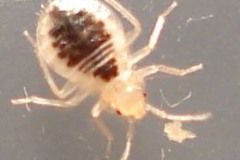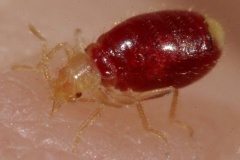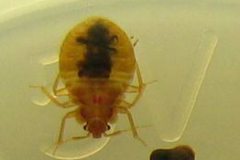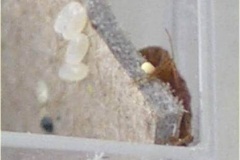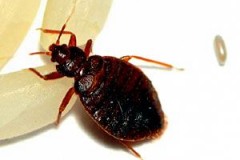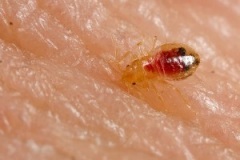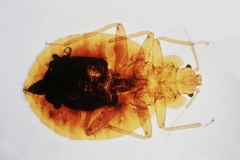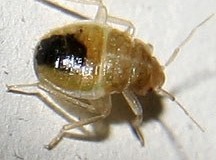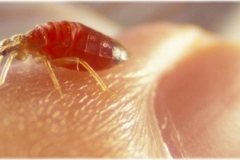Understanding more about bed bugs can help you in your approach and perspective on them as well as give you valuable information to deal effectively with them or make rational, information-based decisions. We want to provide you with us much information on bed bugs as we can for these reasons.
We want to credit upfront, many of the contributors online from who weve borrowed (and cited) information. Weve linked to these original authors throughout this article so please visit their sites for more information on any of the topics, related to bed bugs that you see here.
Bed bugs (Cimex lectularius) or Cimicidae, vintage engraved illustration. Bedbug isolated on white. Trousset encyclopedia (1886 1891).
In 1966 Robert Leslie Usinger published a book entitled, Monograph of Cimicidae. Usinger, worked and taught at the University of California, Berkeley, in the 40s through the 60s. While some of his book in now outdated, it remains the heftiest bed bug book in existence. It is phone-book thick with 585 dense pages describing the seventy- four bed bug species that were known at the time it was written.
In his book, Usinger suggests, and most experts today agree, that the bedbug got its start in caves somewhere along the Mediterranean seaboardtens of thousands to hundreds of thousands of years ago inwhat is now considered the Middle East. Bats likely lived in thosecaves, as they still do today, and they were host to parasitic bugs.Hypothetically, our ancestors or perhaps close kin such as theNeanderthals, with whom our early relatives interacted, sought shelter in these caves. When they did,some of the bat bugs took notice. Here was a new potential sourceof food. Temporary parasitic insects such as these are uniquelyadapted to their host, especially when they live a restricted lifewith access only to a certain food source. Their mouthparts andlegs, for example, are shaped to deal specifically with the skin andblood of whatever animal they feed on. These early bat-feedingbugs that were able to also bite our ancestors would have had characteristicsallowing them to feed on an entirely new mammal witha strikingly different biology and lifestyle.
The shift from one host to another, and the subsequent alteredversion of the bug that would eventually emerge, was likely a messyprocess, and the precise moment when it began is unknown. Buta simplified version of the story is this. Compared to the bugs livingoff of bats, the bed bug would evolve wider and longer mouthpartsto accommodate for our ancestors larger red blood cells andthicker skin. The newer bug developed less hair to make it easierto climb over our ancestors smoother bodies. Its legs lengthened,morphing from short and strong, which helped to grasp a batsfurry body, to long and quick, which made it easier to run fromslapping hands. Its circadian rhythm shifted, too, so it could feedat night, rather than during the day when bats roost; even today,the bug changes its feeding schedule to match its hosts sleep cycle.The new bugs passed these favorable traits to their offspring. Andas time went on, people began to live in more clustered homes incamps and villages, and the relationship with the bed bug grew stronger. The bug thrived in increasingly condensed dwellings,its reproduction and spread boosted by the heat of our hearth-warmedhomes. As early civilizations expanded interaction withone another through trade and travel and moved from smaller villagesto cities, the bed bug did, too.
Source: A Drop of Blood with Legs: How the bed bug infiltrated our bedrooms and took over the world.
While a bed bugs life may seem secret to us, it carries on the same basic routines as any other animal: it eats, seeks shelter, and reproduces. For a bed bug, food is always blood. It hunts down each blood meal, as entomologists call it, every few days to a week and almost exclusively at night. From its hiding place in the bed-frame joint or the nightstand screw, it senses the carbon dioxide from your breath, the heat from your body, and, perhaps, some of the hundreds of other chemicals regularly emitted from your skin. It ventures out, scurrying across the floor, up the bed legs, and across the sheets. When the bed bug finds you, it grips your skin with clawed feet and unfolds its mouth a long tube called a proboscis, also called a beak- to probe the flesh, seeking the best place to bite. Within the beak are the bugs upper and lower mouth-parts-the maxillae and mandibles, respectively- each divided into right and left sides. When the bed bug is ready to penetrate the skin, the toothed mandibles lead the way, snipping through like scissors to make a path for the maxillae, which follow. Once inside, the mouthparts restlessly seek a blood vessel. Unlike some insects that guzzle pooled blood, the bed bug is a bloodsucker and takes its meal from blood circulating inside a living thing. Assisted by the difference between the high pressure of the blood vessel and the low pressure of its empty body, it fills like a water balloon attached to a spigot.
To find the perfect spot where the blood flow isnt too fast or too slow, the bed bugs mouth performs extraordinary acrobatics, sometimes bending more than ninety degrees as it explores the flesh. Once the bug settles on a vessel, it injects saliva packed with a cocktail of forty- six proteins. Some are anticoagulants toprevent clotting, for a blood clot would be deadly as a half-chewed hunk of steak lodged in your throat. There isnt much room to play with. The bed bugs mouth is just eight micrometers in diameter-thinner than a strand of silk, but just wide enough, as a human red blood cell is seven and a half micrometers across. Other bed bug saliva proteins act as vasodilators, which widen the blood vessels, or prevent hemostasis, which keep the blood flowing; still others have antibacterial properties or help with lubrication. Like other blood- feeding insects, the bed bug may also numb its host with proteins that act as anesthetics to help avoid detection, although no one has scientifically proved this.
An adult bed bugs bite lasts around eight minutes, during which its flat body plumps to double or even triple its original size. Young bed bugs, called nymphs, require less blood, although they need to feed at each of their five stages in order to grow. If they dont, they remain in arrested development indefinitely, or at least until they starve to death. After a bed bug feeds, it concentrates the protein-rich red blood cells, squeezing the rest of the meal-mainly a liquid blood component called sera-out of its rear midbite. These drops and, later, the fully digested blood meal, fall to the bed sheets and dry as black stains, a telltale bed bug mark. Sometimes, too, bed bugs leave a signature as a line of bites along a persons body, a result of several bugs biting at the juncture where the skin meets the bed sheets. (Like pigs to the trough, as Ive heard one medical entomologist describe it.)
After feeding, an adult bed bug skitters back to its bed-frame joint or screw head or suitcase, or wherever else it has made its home, at speeds of up to four feet per minute. Nymphs move considerably slower. Both find their way with specialized receptors on their fine antennae and, perhaps, in their feet, which detect chemicals called pheromones that help guide insects social behavior, oozing from other bed bugs back at the refuge. These are called aggregation pheromones for the fact that they encourage the bugs to group together. (All bed bugs also emit alarm pheromones in times of danger to warn others away, and females may also use chemical signals to help nymphs find their first meal.) Once a bed bug has tracked down the aggregation pheromones and it is safe in its hiding spot, it snuggles in with anywhere from five to dozens of others, including both nymphs and adults. They pack in tight amongst their own eggs, cast skins, and feces, giving off a musty, fruity odor that was described in 1936 by an entomologist as an obnoxious sweetness.
Source: Infested: How the Bed Bug Infiltrated Our Bedrooms and Took Over The World
Video Courtesy of National Geographic: Bedbugs: Coming to a Bed Near You
To Brooke Borel, the author of the book Infested, the recent return of bedbugs is part of a growing trend in which the things we try to eradicate come back, oftentimes with a vengeance. The return of bed bugs, Borel notes, isnt a fluke. It is a return to normal.
Borel believes that the resurgence of bed bugs is due to the evolutionary cycle. She believes they are still evolving, and that in the last few decades they have developed perhaps their worst trait of all: Resistance to bug poison.
The bed bugs of today have thicker, waxier exoskeletons that help shield them from the insecticides we try to poison them with and faster metabolisms to beef-up their natural chemical defenses.
Scientists still arent entirely sure why bedbugs have only now started to come back so strongly, Borel writes, but people are playing an important role in their recent return.
During World War II, scientists discovered the insecticide DDT. With this poison, they succeeded in wiping out tons of insects, including bedbugs, Borel writes. But recently, it stopped working.
Heres Borel:
People used these pesticides for bed bugs in regions outside of the United States where the pest was still common, and also inadvertently dosed the bugs while treating for other insects. Bed bug insecticide resistance grew, for example, in malaria-ridden parts of Africa and Central America as the World Health Organization tried to curb mosquitoes by treating homes with DDT. All it would take for the bed bug to roar back would be a way for it to spread from those resistant hotspots to the rest of the world.
International travel provided that window for the bedbug, Borel says. As the critters hitched a ride on everything from shoe soles to luggage, they spread across the globe. Today, theyre an international scourge.
In a way, we created the modern bed bug: it evolved to live on us and to follow us, Borel writes.
Source: Bedbugs are Evolving into Nightmare Insects
Bed Bugs out of control in Montreal http://www.huffingtonpost.ca/2015/09/10/montreal-bed-bug-problem-out-of-control-exterminators-say_n_8119856.html
Bed bugs in Hospitals? http://www.cbc.ca/news/canada/nova-scotia/victoria-general-bedbugs-found-1.3325238
Hoarding Neighbor Causes Problems for Everyone http://globalnews.ca/news/2303076/hoarding-neighbor-causes-bed-bug-nightmare-for-condo-residents/
Bed bugs in Schools Tolsia, West Virginia http://www.wsaz.com/home/headlines/Tolsia-High-School-Dismisses-Early-Due-to-Bed-Bugs-No-School-Friday.html
Bed Bugs in Workplaces, Regina Beach, SK http://www.cbc.ca/news/canada/saskatchewan/chicken-farm-worker-unprepared-for-seething-mass-of-bedbugs-1.3207955
Bed Bugs in Care Homes Moose Jaw, SK http://www.mjtimes.sk.ca/Opinion/Editorials/2015-08-14/article-4246319/Staffing-levels-need-to-be-addressed/1
Bed Bugs in Your Rental, Saskatchewan Prairie-Dog Magazine Article on Bed Bugs: Landlord and Tenant Obligations
Bed Bugs in the News Canada Global News Articles and Videos
Wikipedia on Bed Bugs
University of Kentucky: UK Entomology
Link:
About Bed Bugs - Bed Bug Ultimate Thermal Service

 Residence
Residence  Location
Location 


